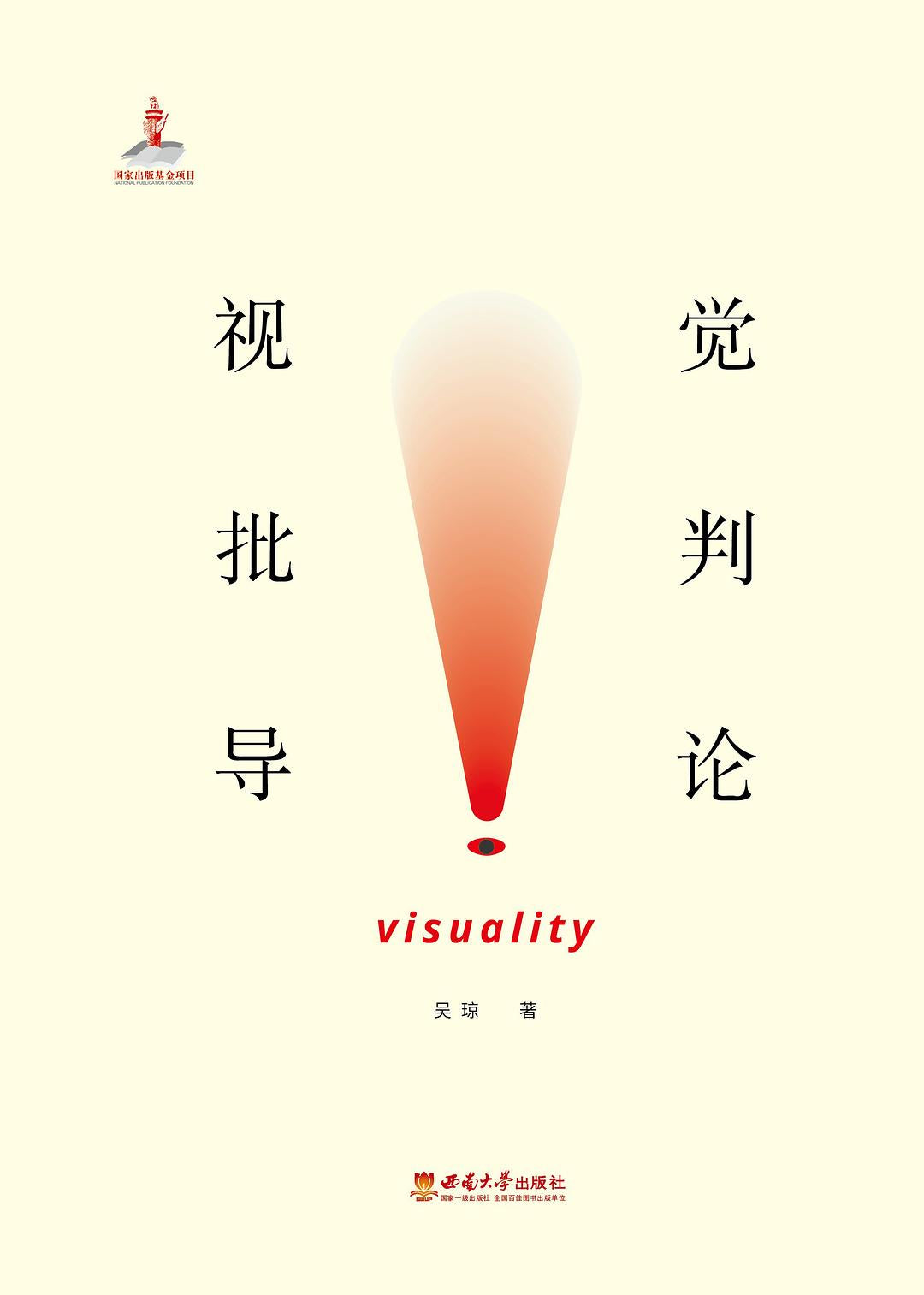WULOLIFE
《视觉批判导论》 作者: 吴琼 出版社: 西南师范大学出版社 出品方: 拜德雅 精装+函套
《视觉批判导论》 作者: 吴琼 出版社: 西南师范大学出版社 出品方: 拜德雅 精装+函套
Couldn't load pickup availability
Description
内容简介 · · · · · ·
- 编辑推荐 -
☆《雅克·拉康:阅读你的症状》作者吴琼教授视觉文化研究力作
☆诊断我们所置身的视觉时代的问题,揭示当代主体被幻化的异形
☆鞭辟入里、深入浅出的论述,搭配100多幅插图,函套精装呈现
★今天,视觉机器就像幽灵机器,它无所不在,它侵入人类生活的每个角落,捕捉着生命的点点滴滴,让人或生命变成了幽灵般的存在。就是说,所谓“消费社会”、“媒体帝国”、“图像时代”、“后现代主义”等描述在与视觉性相关联的时候,所指以视觉作为建制模型实施的社会控制。
★……如同根本不存在纯粹的单色或无色一样,在我们日常的观看行为中,纯粹的、不带欲望色彩的看也是不存在的,欣快感、罪疚感和欣快感— —不管你有没有意识到——总是同时并存于观看的行为中,它们往往构成一种共生性的效果,在并置性的运作中扭结着矛盾的双方,并以此来建构观看——尤其是不合法的或僭越性的看——之于我们的致命诱惑,而观看的故事时常就是在这里展开的。
★我们的观看从来都不是自足的和纯粹的,在个体的观看背后,总有着他人、社会及建制的多重目光交织,自我的看的相互叠置中建构出来的,我们在观看中完成的自我或主体确认其实是一次自我抛离的行为,在“我看故我在”和“我看故我不在”的存在论纠缠。
★现如今,图像的审美效能和快感生产被认为更多地充当了“屏幕”的功能,图像作为表征在揭示、显现某些东西的同时、屏蔽了另一些东西,图像的可见性隐含着不可见性的运作,而可见性本身就是对不可见性的运作,这是一个在不同空间展开的双重运作,图像的政治内涵就是在这个双重运作中被偷偷地嵌入的。
★视觉文化研究发展至今,形态已经极为多样,其对待视觉文化尤其是大众文化或媒介文化的立场也形形色色,但我更倾向于强调它批判性的一面。根本的一点就在于:如果我们承认今天的时代是一个视觉的批指证包裹在我们的观看中的自恋和恋物癖好,亦指证当代主体已被幻化的异形。我同时也要强调一点:视觉文化研究不是疗伤的机器,但对镜城幻影的痴迷已然成为存在或生活世界的一部分,我们充其量只能在“已然”的宿命中寻求一次次的逃逸,因为供给我们的镜像。
- 内容简介 -
“视觉文化研究”(Visual Culture Studies)作为专指的一种学术思潮,兴起于1970年代至19 80 years, 1990, 21 years, 21 years, 21 years, 1990, 21 years, 21 years, 21 years渐弱,人们对它的新鲜感似乎已不如当初那么强烈,但由它构架的问题意识并未因此失效,而是以更为多样的方式在人文社科领域继续渗透和扩散。
本书则是围绕视觉文化研究所架构的主要问题所Note:
导论勾勒了视觉文化研究的谱系、对象、基本架构和主要论题(比如,视觉中心主义批判,机器研究,建制研究,表征的政治,观看与认同)。在此意义上,它也是一份文献综述。
第一章“观看的故事”所关注的是“视觉性”的构成,也就是结构我们的视觉或观看行为的各层次或要素的功能性运作,并在具体的历史语境中来考察这一运作,包括对视觉中心主义的检视。所以,在这个“观看的故事”中,并不存在一种连贯的艺术史或视觉史,也不存在一种连贯的艺术理论史或视觉理论史,本章只是挪用了一些历史片断来展开视觉性在历史中的运作,也只有在历史当中,视觉性的运作才能得到具体的说明。
第二章以摄影、电影和电视为对象来探讨视觉机摄影机、电视机等现代视觉机器的发明及其在日常生活领域的广泛运用,不仅人与对象的关系,就连人与世界的关系都被重新部署,它们已不再是一般意义上的装置和感官技术,而是一种可与身体进行能量交换的“热力学机器”,是已然被植入身体内部且通过控制视觉来进行身体规训的“拓殖机器”。
第三章围绕视觉文化的建制研究展开。艺术的社会学方面是艺术也是视觉“文化研究”的题中之义,“建制的目光”就是对这个主题的一个明示。审美场域的建制绝不只是一套美学或艺术体制,它还是社会建制的一部分,是社会用来建构主体及对象的意义和价值的装置系统。尤其在今天这个视觉化的时代,在这个因为过度的视觉化而滋生出种种暴露癖和窥视癖的社会中,建制的目光就是一道监视的目光,一道调节的目光,它调节力比多的流动,调节视觉驱力的走向,调节权力的分配和再生产。
第四章主要讨论观看与主体性的关系问题。观看与主体构成之间的关系Note:在视觉文化研究中,观看与主体性的关系一直是热门议题,它关涉主体构成的诸多方面,如主体的认同、幻象和快感的问题,视觉场域的建制。题的思考可以有不同的角度和方式,这一章主要在拉康精神分析学的语境中展开讨论,通过把构成主体性的诸要素嵌入观看的拓扑结构来思考观看的迷局,原罪和宿命。
第五章从不同的论述语境来厘定“fetishism”的性质及其构成机制,尤其要考察视觉场域中对象的物神化和奇观化运作,上考察主体的拜物或恋物式观看的构成及其效果。我们所谓的消费主义时代其实就是一个“新恋物时代”,拜物或恋物已经成为这个时代的一种症状,不仅是社会或文化的症状,也是主体的症状、视觉的症状,因为我们的恋物式消费根本上离不开方式乃至消费方式的建构。以此言之,此处对拜物教/恋物癖的考察亦是对消费时代的视觉构成的一种反思,是对一种逆向运作。
第六章集中探讨视觉文化中的表征问题。不论是生产场域中可见性的构成还是交换场域中可见物的意义实现,图像都绝非单它们总在发挥一定的生产功能,既生产意义,也生产接收意义的主体,既生产所再现或表达的指涉物的“知识”,也生产接收“知识”的主体的欲望及其快感满足。图像表征不仅是一种符号运作,而且是一种与意识形态生产相关的社会文化实践,它不仅要参与建构主体与世界的关系,而且直接生产与之相适应的主体类型。
其对待视觉文化尤其是大众但本书更倾向于强调它批判性的一面。根本的一点就在于:如果我们承认今天的时代是一个视觉时代,那么,对视觉中心主义的批判将直接指证当代社会的“全景敞视主义”,指证包裹在我们的观看中的自恋和恋物癖好,亦指证当代主体已被幻化的异形。本书同时也要强调一点:视觉文但对镜城幻我们充其量只能在“已然”的宿命中寻求一次次的逃逸,因为我们只要活着,就离不开视觉文化提供给我们的镜像。
作者简介 · · · · · ·
吴琼,安徽宿松人,中国人民大学哲学院教授、博士生导师,主要学术领域为西方哲学和美学、西方马克思主义文论、视觉文化研究、艺术史和艺术理论,著有《西方美学史》、《雅克·拉康:阅读你的症状》、《读画:打开名画的褶层》等,译有《西方的没落》等。
目录 · · · · · ·
四 电影院的隐喻五 电视的症候第三章 建制的目光一 视觉场域的关系配置二中的词与物第四章观看与主体性一 镜前魅影二 他者的目光三 黑天鹅的欲望图四 死亡的斜视五 从“$◇a”到“S/Z”
第五章 拜物教/恋物癖的秘密一 拜物教的秘密二 奇观化与奇观社会三 闲逛者的凝视四恋物癖的秘密五 女性身体恋物志第六章 表征的重负一 表征作为社会实践二维纳斯的睡姿三 “发明”他者四视觉东方主义参考文献后记
